Posts by Change Checker
Historic Heads – the changing faces of UK coins
The ‘heads’, or obverse, side of a coin has depicted the image of a monarch or ruler for thousands of years.
However, the nature of these images have changed over the centuries. From the Ancient Greeks to Queen Elizabeth II, in this blog we guide you through the differing historic heads of uk coinage.

Ancient Greece and Rome

The coins of ancient Greece set the design template for the circulating coins that we use today in the UK!
On one side, their coins show a portrait of the symbol of national sovereignty and on the other side, we see something that resembles the nation.
Coins of ancient Greece and Rome were provided for city states and depict images of iconic leaders and the gods that protected them.
Roman coins depict the faces of the leaders of the empire, including Emperor Honoria.
Anglo-Saxon and Medieval Period

The Anglo–Saxon period in Britain spans approximately the six centuries from 410-1066AD.
In the ninth century The Royal Mint struck a silver penny of Alfred the Great at the time of the resettlement of London after its first occupation by the Vikings.
The coin would have been struck by hand and the design showcases the rigid markings that would have come as a result of hand tools.
The Renaissance and the Tudors

The Sovereign is undoubtedly one of the most impressive coins struck by The Royal Mint.
In 1489, Henry VII ordered a new coin of gold. The coin surface was large, enabling the engraver to include decorative details. It allowed for more detailed portraits of monarchs.
The portrait on this coin is of the crowned King Henry VIII.
Charles II

When Charles II was restored to the throne, he needed to assert his royal authority and to show a clear break from the rule of Oliver Cromwell.
It’s been suggested that the tradition of monarchs facing in the opposite direction to their predecessor on coins, dates back to Charles II when he wanted coins under his reign to be different from that of Cromwell.
Victoria

Despite reigning for 64 years, there were few coinage portraits of Queen Victoria, with one being favoured for 50 years.
For 50 years the ‘Young Head’ effigy of Queen Victoria featured on UK coinage this classically styled portrait was reinterpreted several times, with each effigy designed to portray the queen as she aged.
Queen Elizabeth II

Five portraits of Her Majesty The Queen have been used on UK coins since her accession to the throne in 1952.
The Queen’s first portrait, by Mary Gillick, shows her wearing a wreath in the style of many British coins struck between the seventeenth and early nineteenth centuries. This portrait remained on UK coins up until decimalisation, when Arnold Machin’s new portrait of The Queen was used (pictured above).
The effigy selected for use from 1985 was prepared by the sculptor Raphael Maklouf, in which she is depicted wearing a necklace and earrings.
By her fourth portrait, designed by Ian Rank-Broadley, a greater degree of realism was used. It shows The Queen in her sixth decade, her crowned head filling the coin’s surface.
The fifth and most recent portrait of The Queen is by Royal Mint designer Jody Clark. This is arguably the first UK coin to introduce elements of personality with a hint of a smile. Clark is the first Royal Mint employee in over 100 years to design a UK definitive coin portrait.
So now you know how the portraits on our coins have changed over the years, which portrait is your favourite? Comment below!
Secure the History of Britain in Coins Collector’s Album to your collection!
The ‘History of Britain in Coins’ Collector’s Album is an exciting way to collect ten specially selected UK 50p and £2 coins that Change Checker consider as some of the most historically interesting circulating coins of the decimal era!
Click here to secure your History of Britain in Coins Collector’s Album for just £25.00 (+p&p) >>
The Tale of the Peter Rabbit 50ps…
Peter Rabbit is arguably Beatrix Potter’s cheekiest character and he’s been one of the most popular and most-loved characters in children’s literature since his first creation.
He’s featured in books, films and even on the UK’s favourite coin, the 50p!
But where did Peter Rabbit’s tale begin and how did he end up on FIVE UK 50p coins? In this blog, we run through the exciting tale of the Peter Rabbit 50p series…
Bridging Generations
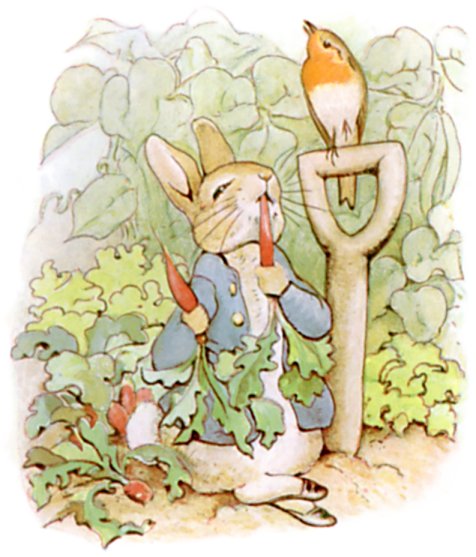
Peter Rabbit first appeared in literature back in 1902, when children’s author Beatrix Potter commercially published what was to become her best-seller, The Tale of Peter Rabbit.
The story is centred around Peter, who is far more adventurous than his siblings: Flopsy, Mopsy, and Cotton-tail. Going against his mother’s instructions, Peter breaks into Mr. McGregor’s garden after being tempted by some delicious looking vegetables… After a close encounter with McGregor, Peter manages to escape, but sadly loses his shoes and iconic blue jacket.
Since 1902, Peter Rabbit has featured in eight books, over 9 tv/film adaptations. and has been made into numerous commemorative souvenirs – including a series of 50p coins!
He’s become a household a name across generations and is loved by families up and down the country.
United Kingdom Peter Rabbit 50p Coins
In 2016, to celebrate 150 years since the birth of Peter Rabbit author Beatrix Potter, The Royal Mint issued a series of 50p coins.
2016 Peter Rabbit 50p
The 2016 Peter Rabbit 50p was the first coin to be issued in the series and features a close up portrait of the loveable rabbit with his big whiskers taking centre-stage.
The design, by Emma Noble, uses original illustrations from the books to celebrate Potter’s life and works.
9,700,000 of these coins were issued into circulation and proved very popular amongst collectors!
2017 Peter Rabbit 50p
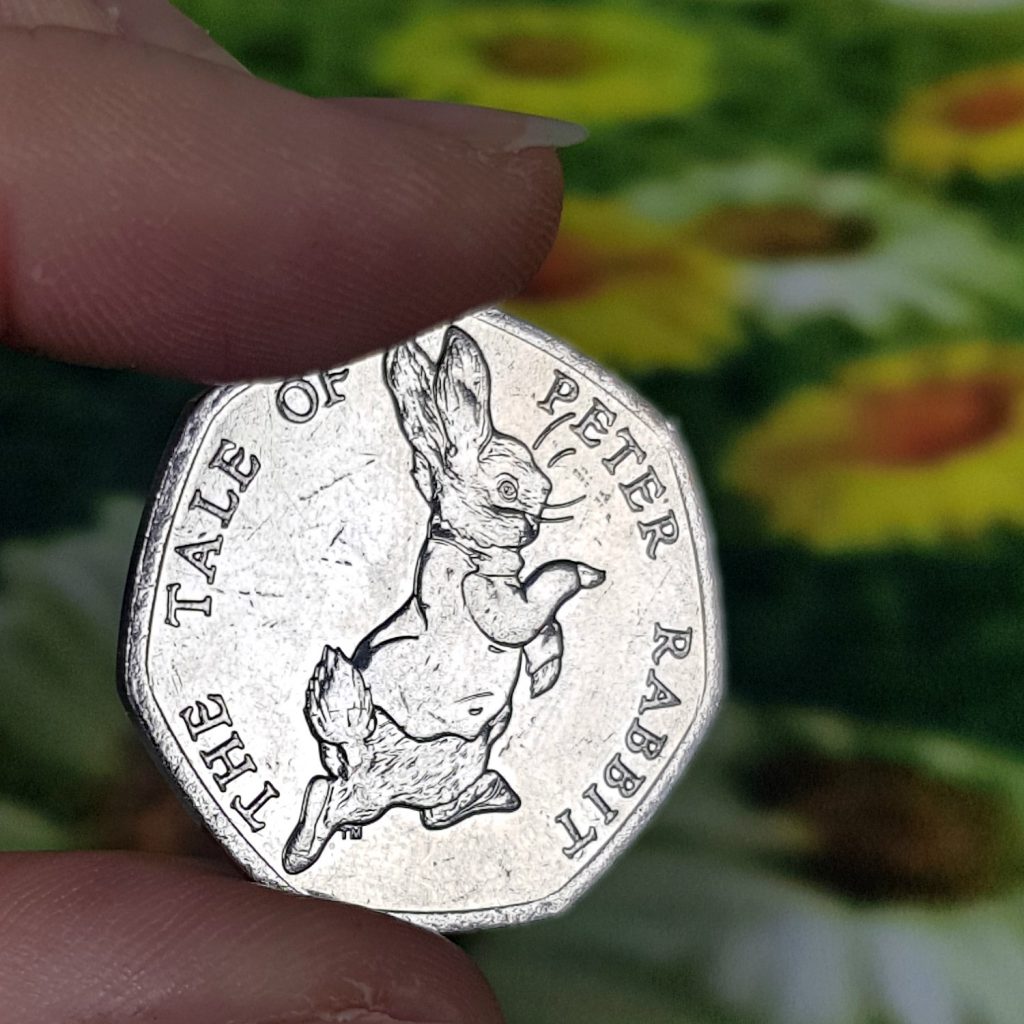
Next up in the series, is the 2017 Peter Rabbit 50p, which is my personal favourite!
Designed by Emma Noble, the coin features Peter Rabbit in his iconic blue jacket in a pose that was to become the emblem of Beatrix Potter’s work.
This 50p has a circulating mintage of 19,900,000. Do you have this coin in your collection? Comment below!
2018 Peter Rabbit 50p
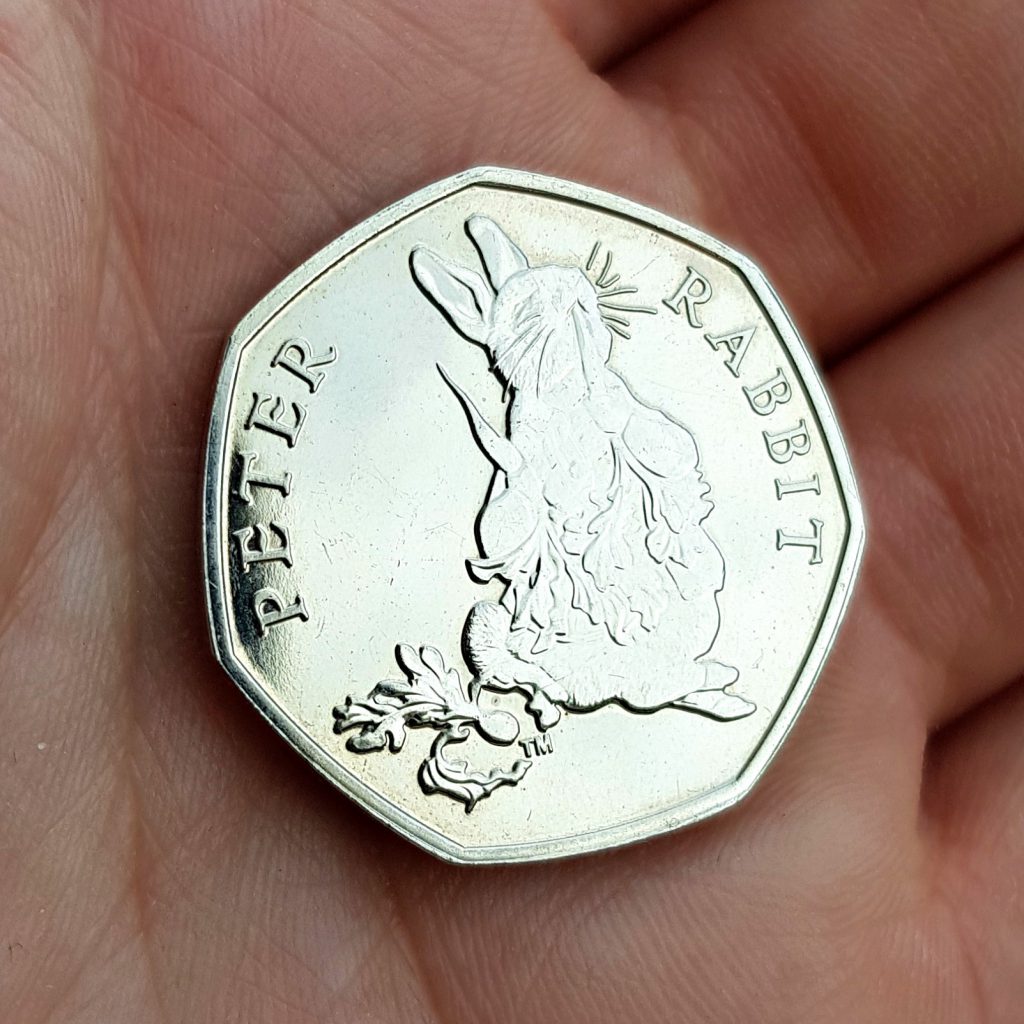
The 2018 Peter Rabbit 50p coin is the third UK coin to feature the much-loved children’s character.
Designed by Emma Noble, the reverse features Peter Rabbit munching on radishes and has the joint lowest circulating mintage of all the Beatrix Potter 50p coins.
The 2018 Peter Rabbit and 2018 Flopsy Bunny 50ps have a circulating mintage of just 1,400,000, so if you have this 50p in your collection, consider yourself very lucky!
2019 Peter Rabbit 50p
The tale continued in 2019 with this 50p coin, which is the fourth coin to feature the much-loved Children’s character.
Struck by The Royal Mint, the reverse of the coin features an original illustration of Peter Rabbit by Beatrix Potter that has been engraved by Royal Mint coin designer, Emma Noble.
This coin was issued in collector quality only and did not enter general circulation.
2020 Peter Rabbit 50p
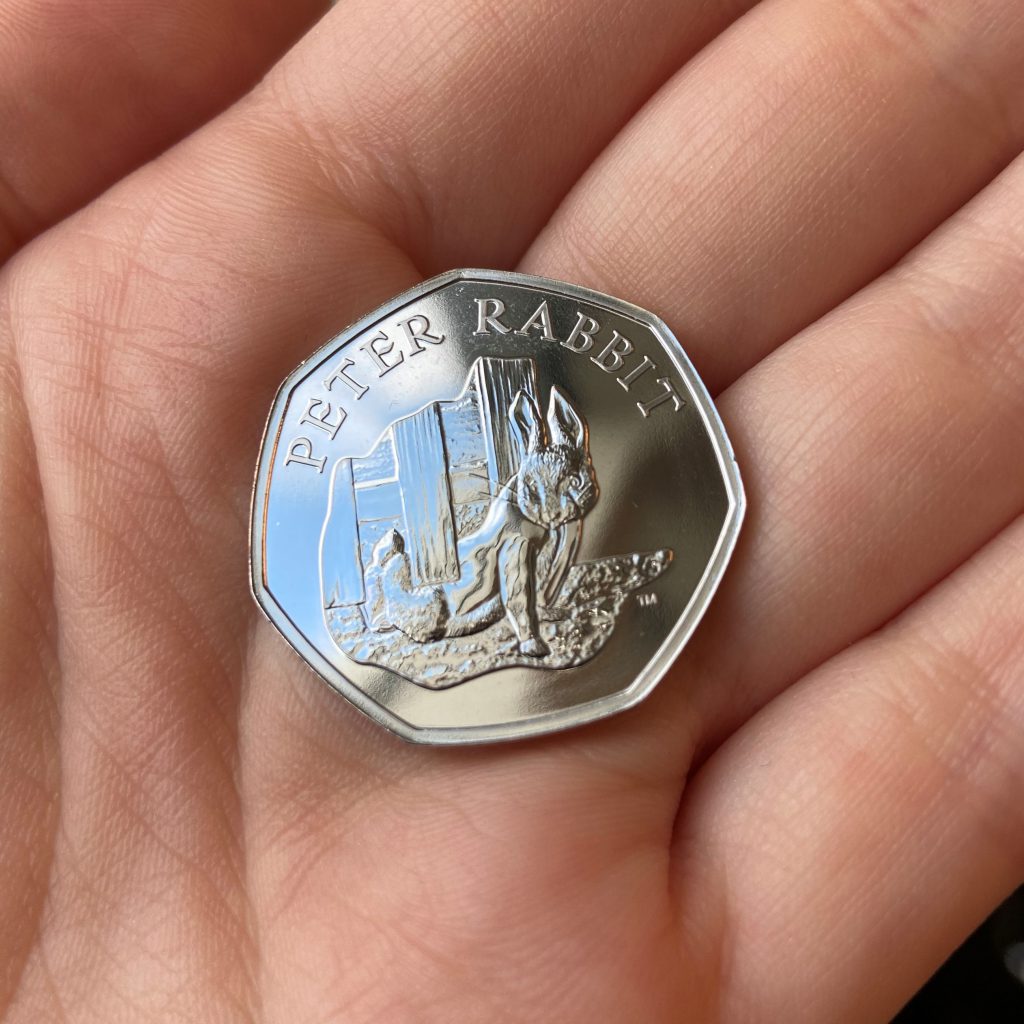
Issued during a world pandemic, this Peter Rabbit 50p is arguably the forgotten coin of 2020.
It was confirmed to be the very last UK Peter Rabbit 50p, sadly bringing his UK 50p tale to an end. Masked by the events of the pandemic, the significance of this coin’s issue was missed.
It’s reverse features a design of an original Beatrix Potter illustration of Peter Rabbit, scrambling under Mr. McGregor’s fence.
It did not enter general circulation and was issued only in collector quality.
So, now we’ve run through all of the UK Peter Rabbit 50p designs, we want to know which is your favourite!
Secure the 2017 UK Peter Rabbit 50p to your collection today!
Your Guide to Britain’s Round Pounds!
The first UK £1 coin was issued in 1983 to replace the £1 banknote, which only lasted a few months in circulation! The £1 coin quickly became a hit with collectors, with everyone trying to hunt down the different designs…
£1 coins were initially issued in recurring five year programmes including series of designs representing the UK and the home nations.
After more than 30 years in the nation’s pockets, the familiar round £1 coin was replaced with an all new, 12-sided £1 coin in 2017 and it lost its legal tender status at midnight on 15 October 2017.
Despite this, some round pounds remain incredibly popular with collectors, due to their designs and their low mintages!

Round pounds over the years
Royal Coat of Arms
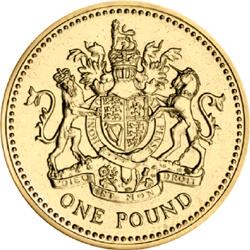
The first £1 coin design features the Royal Coat of Arms designed by Eric Sewell, a chief engraver at the Royal Mint. It also features the edge Inscription: DECUS ET TUTAMEN.
This coin was issued in 1983, 1993, 2003, 2008 and has a circulating mintage of 623,304,510.
Floral Emblems

The first reverse design series of £1 coins took floral emblems as its theme to represent the United Kingdom and its four constituent countries.
They were designed by Leslie Durbin – one of the most highly-regarded silversmiths of the 20th Century.
This series (pictured left to right) featured designs of a Scottish Thistle (1984 & 1989), Welsh Leek (1985 & 1990), Northern Ireland Flax (1986 & 1991), and the English Oak Tree (1987, 1992).
Of these coins, the Northern Ireland Flax has the lowest circulating mintage of 48,853,076.
1988 Royal Coat of Arms Crowned Shield
For the 6th year of the £1 coin, a Royal Coat of Arms design was introduced.
The first Royal Arms of England are attributed to King Richard I whose crest depicted three gold lions. Since then, the Coat of Arms has been adapted over centuries, and the reverse design of this coin displays the most modern version.
All coins dated 1988 feature this design, and 1988 was the only year it was used, making its mintage particularly low (just 7,118,825 were issued!)
Heraldic Emblems

The second series of £1 coin designs, by Norman Sillman used heraldic emblems to represent the United Kingdom and its four constituent countries.
From left to right, the series includes the Scottish Lion Rampant (1994), Welsh Dragon Passant (1995 & 2000), Northern Ireland Celtic Cross (1996 & 2001), and English Three Lions (1997, 2002).
The Scottish Lion Rampant has the lowest mintage in this series of £1 coins, with 29,752,525 entering circulation.
Bridges

The third series of £1 coin designs depicts bridges from each of the four constituent countries in the United Kingdom.
These coins were designed by Edwina Ellis (who later went on to design the incredibly popular 2019 Stephen Hawking 50p!) Pictured left to right, this series included the Scottish Forth Railway Bridge (2004), the Welsh Menai Bridge (2005), the Northern Ireland Egyptian Railway (2006), and the English Millennium Bridge (2007).
The English Millennium Bridge round pound has the lowest mintage of this series, with 26,180,160 entering circulation.
Royal Arms Shield
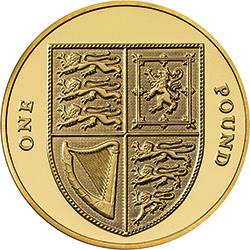
In 2008 a new reverse design for the £1 was issued featuring the Royal Shield of Arms – designed by Matthew Dent.
The edge inscription in Latin reads DECUS ET TUTAMEN which translates as; An Ornament and a Safeguard. This dates back to the first machine struck coins minted in 1662 and refers to the inscription itself which was intended to prevent people scraping valuable metal off the edge of the coin – a process known as ‘clipping’.
This coin was issued for eight consecutive years from its introduction in 2008.
This coin has a circulating mintage of 311,663,630.
Capital Cities

The fourth series of £1 coins used the capital cities of the four constituent countries as the basis of the reverse design.
They were designed by Stuart Devlin, who was also the Goldsmith and Jeweller to the Queen!
The designs of these coins (pictured left to right) feature Belfast City (2010), London City (2010), Cardiff City (2011) and Edinburgh City (2011).
These round pounds have lower mintages than any previous series, with the Edinburgh City £1 having a circulating mintage of JUST 935,000! The Cardiff City £1 is close behind with a mintage of 1,615,000.
Floral Emblem Pairs

The fifth series of £1 coin designs uses pairs of floral emblems, designed by Timothy Noad to represent the United Kingdom and its four constituent countries.
The coins in this series featured designs of (pictured left to right) English Rose and Oak Branch (2013), Welsh Daffodil and Leek (2013), Scottish Thistle and Bluebell (2014), and Northern Ireland Flax and Shamrock (2014).
The coin in this series with the lowest mintage is the Scottish Thistle and Bluebell, with 5,185,000 entering circulation.
The Floral Emblem Pairs were to be the last round pound series, with the final two round pounds being issued independent of each other.
2015 Royal Coat of Arms
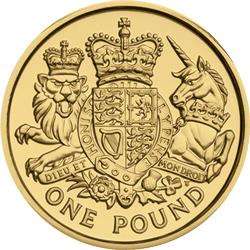
In 2015 the Royal Mint revealed a new design for the Royal Arms £1 coin.
Timothy Noad’s contemporary adaptation of the traditional Royal Arms design is one of last commemorative designs to feature on the pound coin, as the newly shaped coin entered circulation in 2017.
This coin has a circulating mintage of 129,616,985.
2016 The Last Round Pound
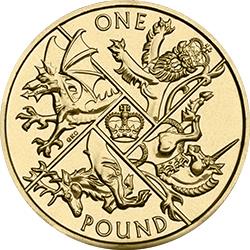
This 2016 £1 coin is the final ‘round pound’ issued by the Royal Mint, calling time on a coin which was first issued more than thirty years ago.
The reverse design features the animals that represent each of the four constituent UK countries and was designed by Gregory Cameron.
This coin did not enter general circulation and is only available to buy in a Brilliant Uncirculated quality.
So hopefully our guide to Britain’s round pounds will help you along the way to expanding your collection!
What’s most exciting about these coins is that they’re not used in circulation anymore, which makes them particularly sought-after by collectors!
Do you have any of these coins in your collection? Let us know in the comments below!
Find, Collect, and Swap the coins in your change

If you’re interested in coin collecting, our Change Checker web app is completely free to use and allows users to:
– Find and identify the coins in their pocket
– Collect and track the coins they have
– Swap their spare coins with other Change Checkers





